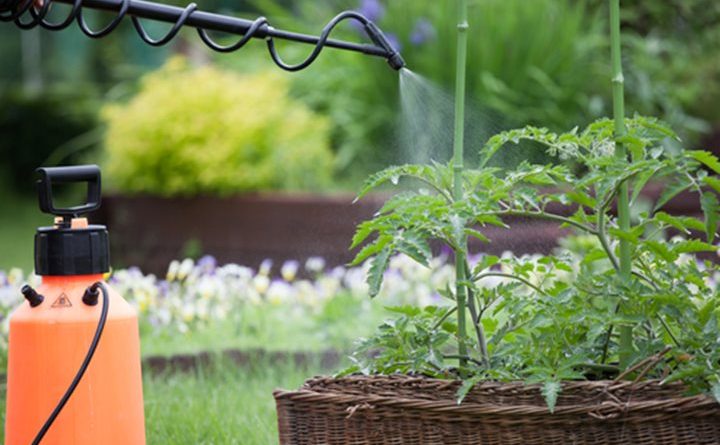The amount of chemicals in the most popular lawn fertilizers, herbicides and pesticides can severely damage the environment and cause algae blooms in ponds and lakes. It is actually easy to avoid using chemicals when caring for a lawn. Several tips will help you to have a healthy lawn that naturally fights weeds and pests without chemicals or exterminators.
Do Not Cut Grass Too Short
Grass should not be cut shorter than two to three inches. Four to six-inch long grass is optimal. Cutting grass too short removes the ability of the plant to absorb nutrients. This leads to weak grass that is vulnerable to pests, weeds and diseases.
Aerate the Lawn
The lawn should be aerated during the season. This means poking holes in the ground to around six inches in depth. There are special aerators or aerating sandals available although any instrument less than an inch in diameter will work. Aerating lets more air, water and nutrients reach the soil so the grass becomes stronger. Strong grass and root systems will prevent weeds from growing since there is too little space and too few free nutrients.
Encourage Beneficial Insects
Encourage beneficial insects like ladybugs, lacewings and praying mantises around the lawn. This can be done by planting things like columbines, globe lily alliums, and coriander. Beneficial insects will seek out and kill many types of pests on a lawn or in a garden. Placing these plants along the edges of your lawn can help to control pests.
Trim Thatch
Thatch is the stringy network of old roots that sits just above the soil where grass grows. You should make certain to trim the thatch regularly. You need to keep thatch at around one-quarter to one-half inch thick at the most. Too much thatch will strangle the grass and create a haven for insects and diseases. Some thatch should be left, however, because it protects the grass and helps the soil retain some moisture.
Choose Native Grasses
You should choose grasses for your lawn that are as native to your region as possible. Native grasses are far stronger than genetically modified or generic grass blends. Native grasses have a natural resistance to the pests in your area. They will form strong roots that can kill weeds before they start growing. Health native grasses also grow faster and can create shade that stops weeds from developing.
Test and Supplement Soil Regularly
The soil needs to be healthy in order to have a strong lawn that can thrive without chemicals. You should test the soil with a kit at the start or end of each season. You need to look at what nutrients are missing or out of balance. You also need to look at the pH. This is the soil acidity. You can add natural ingredients like sulfur, lime or calcium to create healthier and more balanced soil once you have the results.
Start Composting For Fertilizer
A final step is to start composting in order to remove the need for commercial fertilizers that contain chemicals and high amounts of phosphorous. You can compost by forming a pile of things like lawn clippings, coffee grinds, and straw. This will decompose over the course of a few months and create an organic fertilizer that can replenish the soil in your lawn.
Featured Image Source: Depositphotos/© NinaMalyna







